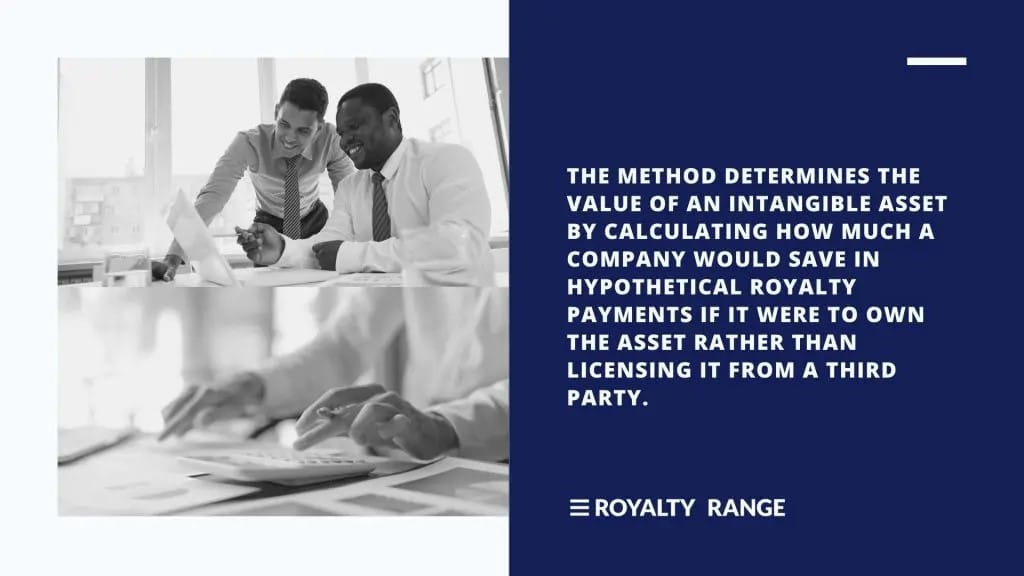What is the royalty relief methodology (relief from royalty method)?

Kris (Kestutis) Rudzika |
May 15, 2021

The royalty relief methodology (also called the relief from royalty method or royalty savings method) is one of the methods that can be used to value intellectual property assets. In this article, we discuss the royalty relief method in more detail and explain how it is applied.
What is the royalty relief methodology?
The royalty relief method is a combination of the market and income valuation approaches. It reflects the market approach in its use of similar licensing deals to calculate an appropriate royalty rate (from databases like RoyaltyRange), and it mirrors the income approach by using estimates of revenue, growth rates, tax rates and discount rates as a basis for value.
The method determines the value of an intangible asset by calculating how much a company would save in hypothetical royalty payments if it were to own the asset rather than licensing it from a third party. In other words, the value of the intangible asset is based on the costs that the company would avoid by not having to pay a license fee or royalty to use the asset.

Companies can use the relief from royalty method to value a wide range of intangible assets, including trademarks, trade names, brands, patents, technology and know-how.
How do you apply the relief from royalty method?
The royalty relief method involves accurately calculating the hypothetical royalty fees that would be saved by owning an intangible asset rather than licensing it. The process involves:
- Forecasting the expected revenue of the asset – The first step is to project the financial data of the company, including revenue estimates, tax rates and growth.
- Calculating a notional royalty rate based on market data – The next step is to work out an appropriate royalty rate for the licensing of the intellectual property asset in question. One option for this is to take a market approach and analyze what similar companies charged for similar assets in licensing agreements. You can find market-based royalty and licensing data by using a royalty rates database like RoyaltyRange.
- Estimating the expected life of the intangible – You need to estimate the useful life of the asset. There are many factors that can help determine this, including the expected usage of the asset and the expected life of similar assets in similar scenarios.
- Applying the royalty rate to the forecasted revenue for the asset – Next, the royalty rate (usually presented as a percentage) can be applied to the projected revenue.
- Applying the appropriate tax rate – This will bring you to an after-tax royalty saving.
- Estimating a discount rate for the royalty savings – Use a risk-adjusted discount rate to discount the resulting revenue streams.
The value of the intangible is worked out by adding together the post-tax royalty savings over each year of the intangible asset’s estimated useful life.
What are the downsides of the royalty relief methodology?
One of the main downsides with the royalty savings method is the difficulty of accessing royalty rates data on real licensing deals involving similar assets. However, you can use a royalty rates database like RoyaltyRange to find the data you need quickly, easily and reliably – allowing you to see what royalty rate real organizations charged in comparable situations.
Find third-party royalty rates for your valuation today
To get reliable data for your relief from royalty calculation, contact RoyaltyRange today.
Request One Search
We will perform the search and deliver the initial results within hours, at no cost.




